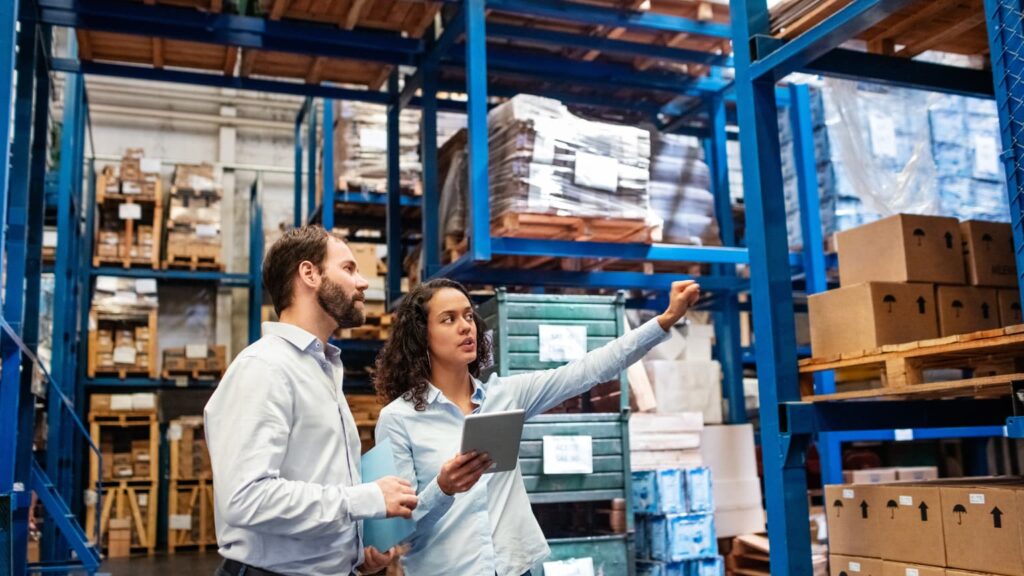As a CEO or a passionate participant in the food industry, you undoubtedly possess a deep understanding of the intricate challenges involved in effectively managing the food supply chain. The food supply chain encompasses various stages, ranging from production and distribution to retail, each presenting its own set of challenges and opportunities.
One of the most pressing issues in the food industry is to improve the efficiency of the supply chain and minimize waste. This problem can be effectively tackled with the aid of data analytics.
Data analytics is a powerful tool for gaining insights and making informed decisions. It can be especially valuable for streamlining supply chain operations, minimizing waste, and increasing profitability in the food industry.
Food companies can gain greater visibility into their operations and confidently make data-driven choices by tapping into various data sources, such as sensors, IoT devices, social media, and transactional data.
Implementation of Inventory Dashboard

By implementing Inventory Dashboard, you get an overview of how your warehouses are currently placed with the available space, thereby getting the idea to direct your next stock shipment to a warehouse having maximum availability.
Also, having a view of the stock value location-wise, top ordered products, products low in stock, and lots about to expire in the next 15-30 days, thereby enhancing supply chain efficiency by making better decisions. This technique uses historical data to show a pattern and accordingly make future decisions.
By analyzing past trends and patterns in supply chain operations, companies can identify potential bottlenecks, inefficiencies, and waste points and take proactive measures to correct them.
Real-time monitoring

Real-time monitoring through sensors and IoT devices can significantly enhance supply chain efficiency. With the ability to collect data on important variables such as temperature, humidity, location, Planned SLA vs. Actual ETA, Remaining ETA, and quality, companies can promptly detect and address any issues before they escalate.
This powerful tool aids in preventing spoilage, minimizing food safety risks, and improving quality control measures. By utilizing data analytics and real-time monitoring, companies can optimize their supply chain and stay ahead of the competition.
Generating Timely Alerts

You would have often heard the saying, A Stitch in Time Saves Nine. Such is the importance of Alerts in Supply Chain Management.
- A timely temperature and humidity alert can save loads of food items from getting contaminated or stale.
- A timely Reorder Level alert helps from running out of stock for products.
- A timely Geofence alert helps arrange ground staff for offloading a consignment just in time.
- A timely Lot Expiry Alert can help stock out lots from the inventory, which can be shipped fast before expiration.
All these alerts help streamline ground operations, thereby reducing waste.
Tracking Shrinkage to Boost Profitability

The most valuable information is produced by continuous measurable data (CMD). CMD enables managers to control the root causes of issues impacting their business and implement continual improvement programs in ways that are not otherwise possible.
Knowing what to measure, when and how to measure, and how to report the resulting information in a form that can be acted upon is critical to success. Tracking Shrinkage Data, analyzing the reasons for shrinkage, and acting upon them as a continuous improvement program can be a powerful tool company can use to boost their profitability.
Challenges to Implement data analytics

Implementing data analytics in the food industry poses challenges, with data quality being one of the most significant hurdles. Accurate, complete, and consistent data is crucial, and many factors can compromise its quality, such as sensor malfunctions, human error, and data silos.
To tackle these obstacles head-on, companies must invest in robust data governance frameworks and management systems to ensure data integrity and consistency across various sources.
The food industry faces a significant challenge in ensuring data privacy and security. It is due to the sensitive nature of the information involved, such as customer data, supplier details, and trade secrets.
Companies must implement robust cybersecurity measures to combat cyber threats and other risks, including encryption, access controls, and intrusion detection systems.
F&B companies must establish a comprehensive data strategy that aligns with their business objectives and targets to fully capitalize on data analytics benefits. It can be achieved by following a series of well-defined steps:
1. Identify the specific business questions that need to be answered through data analytics, ensuring that they align with the overall objectives and goals of the company.
2. Identify the relevant data sources, including internal transactional and supply chain data and external data such as social media and weather data.
3. Establish a robust data governance framework that guarantees data quality, security, and privacy by implementing policies and procedures for data collection, storage, analysis, and sharing.
4. Invest in data management systems that can handle the complexity and volume of data by integrating data from various sources, cleaning and transforming data, and offering analytics capabilities.
5. Employ data analytics professionals with data science, statistics, and machine learning to analyze and interpret the data for informed decision-making.
Unlock the power of data with Farm to Plate

Farm to Plate is the ultimate tech solution that can guide food companies in developing a comprehensive data strategy perfectly aligned with their business objectives and goals. By partnering with us, companies can pinpoint specific business questions that require answers through data analytics, ensuring they align with their objectives.
We can also assist companies in identifying relevant data sources, including internal transactional and supply chain data and external data such as social media and weather data. Our robust data governance framework and ease of integration with clients’ systems ensure data quality, security, and privacy.
We establish policies and procedures for data collection, storage, analysis, and sharing to ensure maximum protection. Our data management systems can handle the complexity and volume of data by integrating data from various sources, cleaning and transforming data, and offering analytics capabilities.
With our expert, analytically-minded professionals, we analyze and represent data for making informed, meaningful decision-making. By partnering with Farm to Plate, food companies can quickly develop a comprehensive data strategy that helps them achieve their business objectives and targets.
Conclusion
Data analytics plays a crucial role in improving supply chain efficiency and reducing waste in the food industry. By leveraging various data sources and employing analytical tools, food companies can gain valuable insights and make informed decisions.
Implementing inventory dashboards allows for better visibility and proactive decision-making, while real-time monitoring through sensors and IoT devices helps optimize supply chain operations and ensure quality control. Timely alerts and tracking shrinkage data contribute to reducing waste and boosting profitability.
However, implementing data analytics also presents challenges, such as data quality, privacy, and security. To overcome these obstacles, companies need to invest in robust data governance frameworks and cybersecurity measures. By following a comprehensive data strategy and partnering with specialized solutions like Farm to Plate, food companies can unlock the power of data and achieve their business objectives and goals.
Namrata Anand, Technical Content Writer at Paramount Software Solutions & farmtoplate.io
